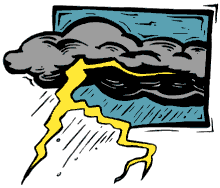|
This happy situation prevailed in early 1982 for the U.S. equity market generally. But, twenty years later, after the longest bull market for stocks in history, the circumstances are reversed.

Now the earnings yield of a combined New York Stock Exchange and Nasdaq stock portfolio would be less than half the yield of the average Aaa-rated corporate bond. Nor is corporate debt as low as a generation ago.
Even after the market setbacks that began in March, 2000, the excesses of the nineties remain largely intact, as reflected in an earnings yield that would worry many value investor "meteorologists." (Note, for instance, that the Wilshire 5000 Index P/E is now 31.5, for an earnings yield of just 3.17.)
The stock market overall would have to fall about 50% or the nation's corporations double their earnings (not realistically anticipated anytime soon), or a combination of the two, just to get the earnings yield to match the bond yield of our best companies.
Studies of earnings yield as a predictor of future return have demonstrated that, with few exceptions, the present situation is followed by years of underperformance for stocks.
At this time, with rising deficits again and other unfavorable factors making the real (after inflation) return of bonds also uncertain, and with the yield of money market funds or short-term certificates of deposit negligible, it is hard to find reason for much optimism for the average investor.
Perhaps the best he or she may do, in light of possible looming turbulence and the lack of satisfactory safe havens, is to return to the basics, prepare for the worst, and "batten down the hatches" until any storms pass.
| |